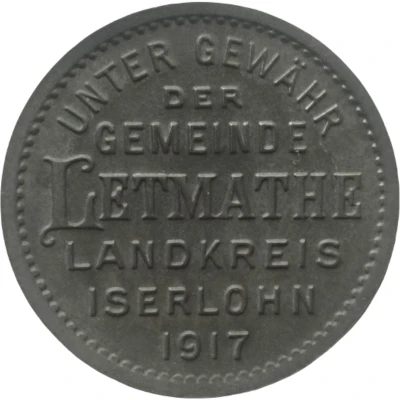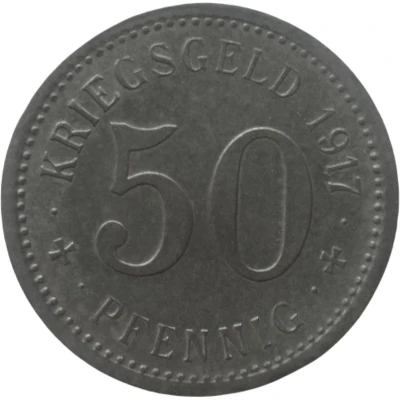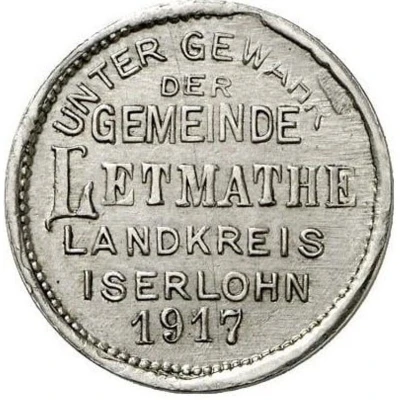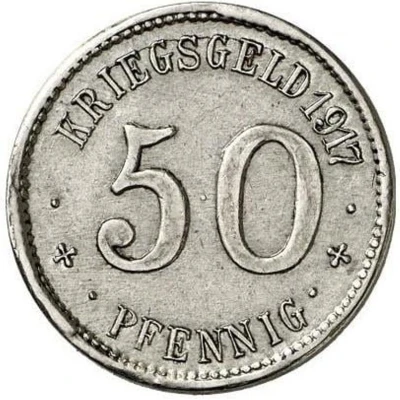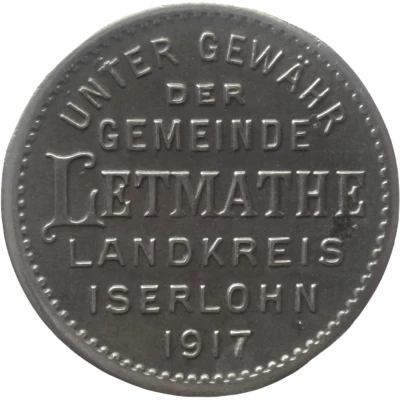
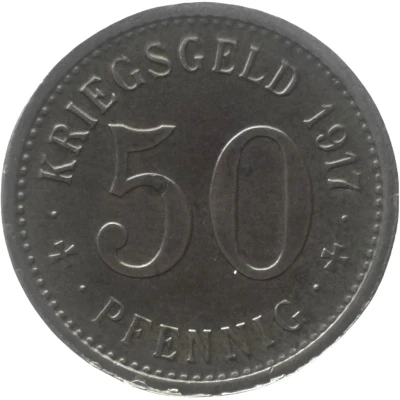

© Willem63 (CC BY-NC-SA)
50 Pfennigs - Letmathe
1917 year| Iron | 4.5 g | 22.6 mm |
| Issuer | Municipality of Letmathe (Prussian province of Westphalia) |
|---|---|
| Emperor | William II (Wilhelm II) (1888-1918) |
| Type | Standard circulation coin |
| Year | 1917 |
| Value | 50 Pfennigs (50 Pfennige) (0.50) |
| Currency | Mark (1914-1924) |
| Composition | Iron |
| Weight | 4.5 g |
| Diameter | 22.6 mm |
| Thickness | 1.7 mm |
| Shape | Round |
| Technique | Milled |
| Orientation | Medal alignment ↑↑ |
| Demonetized | Yes |
| Updated | 2024-10-04 |
| Numista | N#345183 |
|---|---|
| Rarity index | 97% |
Reverse
Pearl rim, legend surrounding denomination.
Script: Latin
Lettering:
KRIEGSGELD 1917
50
• ✠ • PFENNIG • ✠ •
Edge
Plain
Interesting fact
One interesting fact about the 50 Pfennigs - Letmathe 1917 coin is that it was issued during a time of economic turmoil in Germany, specifically during the hyperinflation period of the 1920s. The coin's iron composition was a result of the wartime economy and the lack of available metals, and it was one of the few coins that were produced during this time that did not have a portrait of a king or emperor. Instead, it features the image of a farmer and a woman, symbolizing the working class and the importance of agriculture in the country's economy. Despite its humble design, the coin is now a rare and valuable collector's item, with some mint conditions selling for thousands of dollars.
